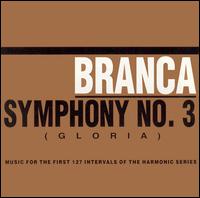Gating
Gating was the principal focus of Audio Arts, bringing us back to the old ADSR envelope that is well-known in synthesis circles. In the case of ProTools, gating is used primarily to clean up sound. Thus, reducing noise, but still attempting to keep the sound sounding natural. It is used mostly on drum kits and as a part of the sidechaining technique.

Eliminating unnecessary noise from the mix is the focus of gating, listening to as much noise as possible was the focus of the Forum workshop, which was initially focused on Northeast American composers. 'Surf Music II' by Jack Vees provided an awesome mix of low frequencies and resonant high frequencies. The sonic material came from a bowed electric bass and electronics, and created a work of over 20 minutes duration. I liked the 'bell-like' frequency modulations, and then thought that much of this work could have been produced synthetically with Max/MSP. Some of the sounds produced could have been created by my application 'Tunnel1020' that I built last year.
'Fog Tropes II' by Ingram Marshall was a piece for string quartet and tape, which was a combination used in the SonicSpace concert as a part of The Adelaide Festival of Arts. I enjoyed both pieces. 'Different Trains' composed by Steve Reich was the Festival piece, with guest quartet Aurora Strings, whilst 'Fog Tropes II' was performed by the internationally well-known Kronos Quartet. In both compositions I find it incredible that the composers can create a tape piece that is sympathetic and complimentary to the string quartet or vice-versa. This prompts some questions about the compositional process. What is created first? The tape or the string quartet? Are they composed together?
Along with some other pieces played, some pieces by David Harris were played by the composer, which was interesting. The idea as demonstrated by one of the piano pieces was using minimalist techniques for maximal results. The use of palindromic techniques was another feature.
Winding up the blog for week 4, I will provide some details and shortcuts relating to SuperCollider (SC). SC has a modern, unique and sophisticated server architecture, with an internal and local server with boot buttons. However, if typing is preferable to clicking, I could type the command s.boot to load the localhost server and s.quit to decommission the server. Command-Shift-K clears the post window, Command-Period(.) stops sound, and Apple-Shift-/(?) brings up the help. The first unit generator we've explored is SinOsc, which is just a sine-wave oscillator. The parameters multiplier and addition are used for scaling, controlling amplitude. The unit generators are either .ar or .kr. .ar stands for Audio Rate referring to signal and .kr stands for control rate. SinOsc is a .ar, which means that it is more intensive for the computer to use.
If anyone reading this has some spare time and a decent internet connection for streaming audio and video, check out: www.henrygwiazda.com. It is an interesting website created by an intriguing electronic music and video artist.
REFERENCES
Grice, David. 2006. Gating. Tutorial presented at the Electronic Music Unit, University of Adelaide, 21 March.
Haines, Christian. 2006. SuperCollider (1). Tutorial presented at the Electronic Music Unit, University of Adelaide, 23 March.
Harris, David. 2006. No Title. Workshop presented at the Electronic Music Unit, EMU Space, University of Adelaide, 23 March.
If anyone reading this has some spare time and a decent internet connection for streaming audio and video, check out: www.henrygwiazda.com. It is an interesting website created by an intriguing electronic music and video artist.
REFERENCES
Grice, David. 2006. Gating. Tutorial presented at the Electronic Music Unit, University of Adelaide, 21 March.
Haines, Christian. 2006. SuperCollider (1). Tutorial presented at the Electronic Music Unit, University of Adelaide, 23 March.
Harris, David. 2006. No Title. Workshop presented at the Electronic Music Unit, EMU Space, University of Adelaide, 23 March.



